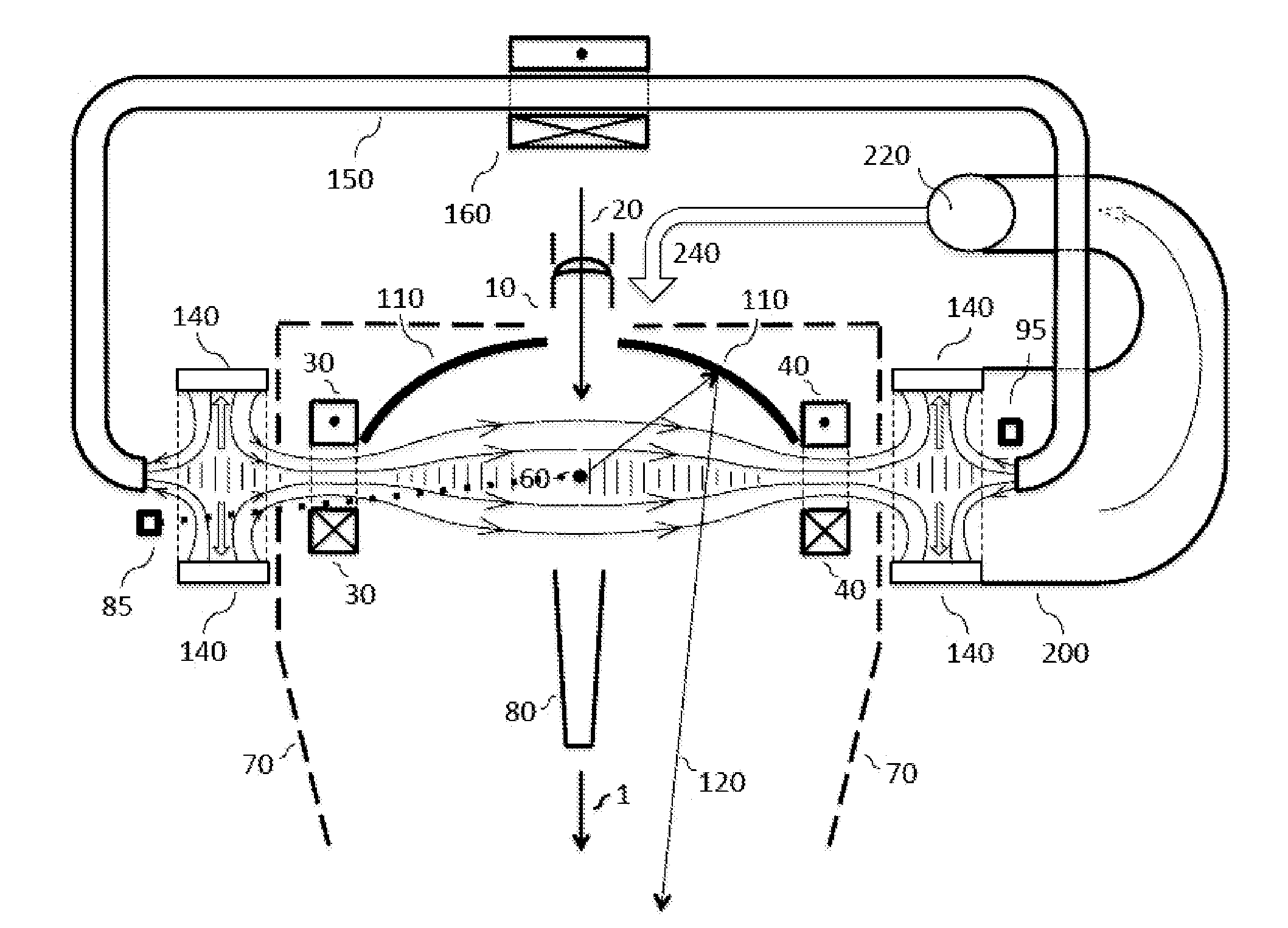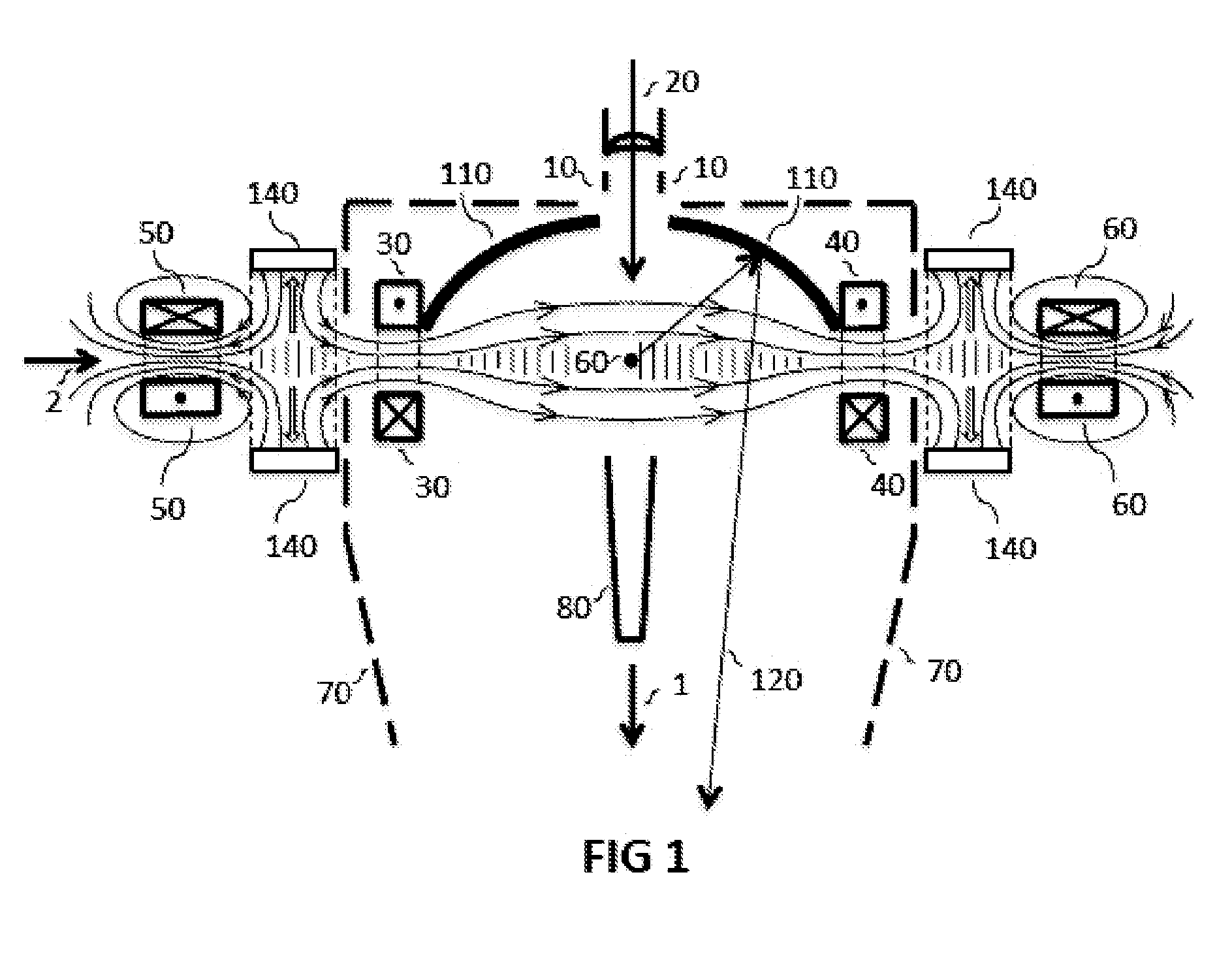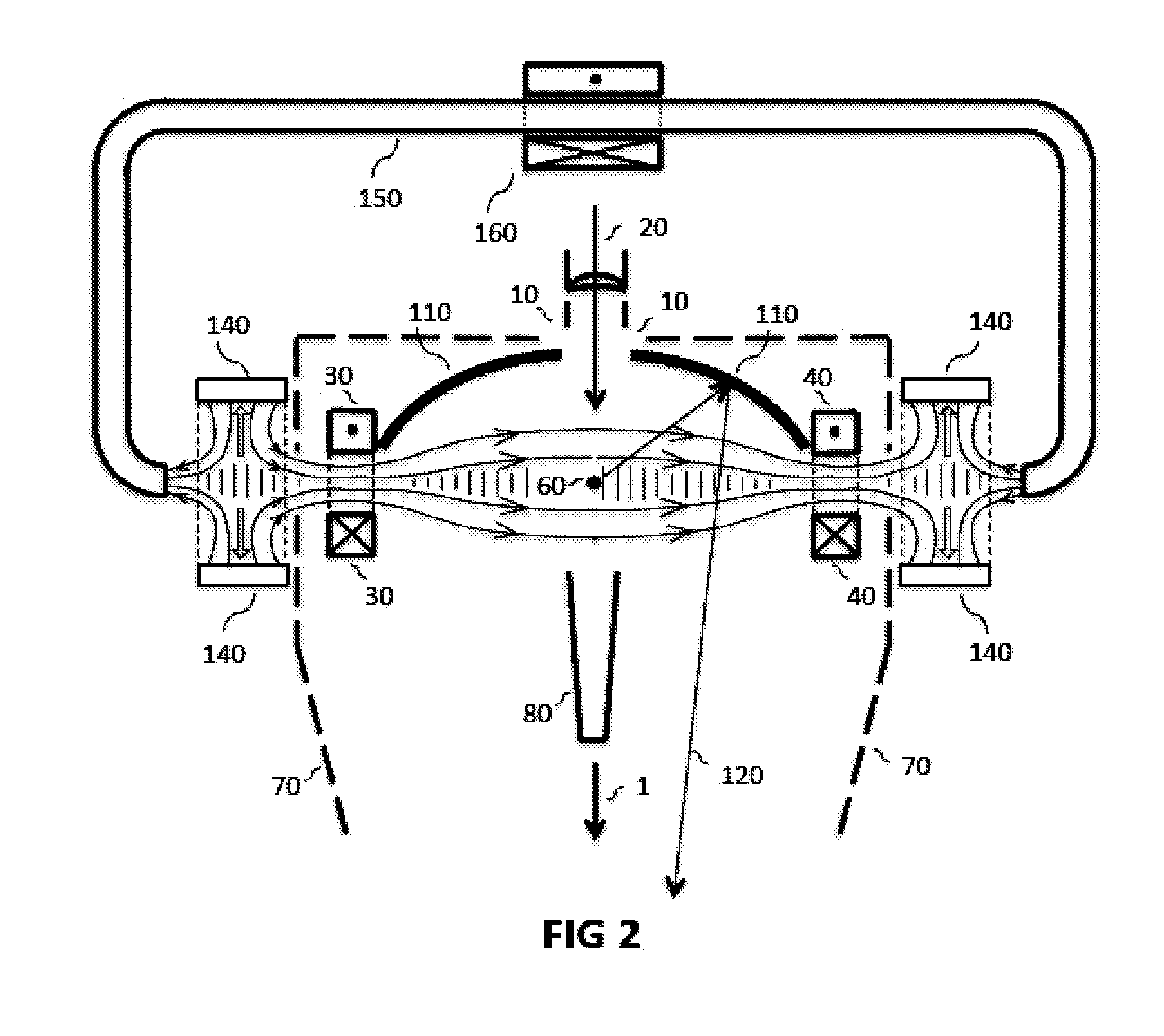Extreme ultraviolet source with dual magnetic cusp particle catchers
a technology of magnetic cusps and ultraviolet light, applied in the field of production of extreme ultraviolet light, can solve problems such as reducing collection efficiency, and achieve the effect of reducing collection efficiency and high plasma heat concentration
- Summary
- Abstract
- Description
- Claims
- Application Information
AI Technical Summary
Benefits of technology
Problems solved by technology
Method used
Image
Examples
Embodiment Construction
[0021]We describe the magnetic field configuration with reference to FIG. 1. The laser / plasma interaction occurs at central position 60. The laser beams 20 that are necessary to expand and heat incoming droplets may be delivered along the axis of chamber 70, shown as a dashed outline. Chamber 70 has rotational symmetry around symmetry axis 1. For times when droplets are not present, or the target is missed, there is a beam dump 80 for the laser beams. In this drawing the tin droplet stream and catcher for unused droplets are not shown. They may be positioned is several ways, one of which will be shown in FIG. 5. Also symmetrical around axis 1 is the EUV collection mirror 110 which has a central hole to admit the laser beams. A typical ray of EUV light 120 leaves the interaction position 60, reflects off mirror 110 and proceeds to the chamber exit point on axis 1, a position referred to as the “intermediate focus” between the source optic and the stepper illuminator optic. The magnet...
PUM
 Login to View More
Login to View More Abstract
Description
Claims
Application Information
 Login to View More
Login to View More - R&D
- Intellectual Property
- Life Sciences
- Materials
- Tech Scout
- Unparalleled Data Quality
- Higher Quality Content
- 60% Fewer Hallucinations
Browse by: Latest US Patents, China's latest patents, Technical Efficacy Thesaurus, Application Domain, Technology Topic, Popular Technical Reports.
© 2025 PatSnap. All rights reserved.Legal|Privacy policy|Modern Slavery Act Transparency Statement|Sitemap|About US| Contact US: help@patsnap.com



